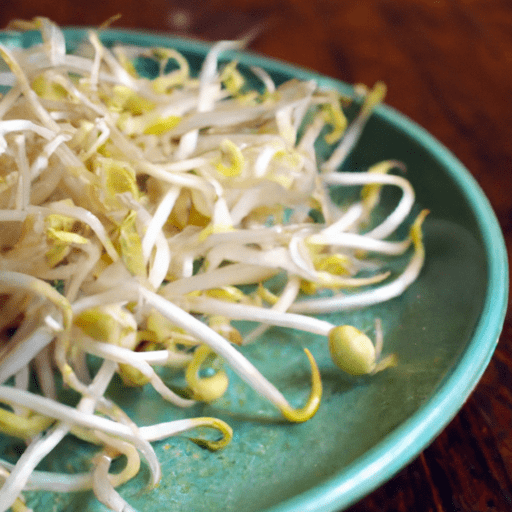The Versatile and Nutritious Beansprouts: A Culinary Delight
Beansprouts are more than just a humble garnish - they are a delightful and nutritious addition to any dish. These tiny, crunchy sprouts are packed with nutrients and have a distinctive flavor that can enhance a wide range of culinary creations. In this blog post, we’ll dive into the world of beansprouts, exploring their taste, common uses in cooking, nutritional value, and even uncovering some interesting historical facts.
A Burst of Flavor and Crunch
Beansprouts have a mild, crisp texture with a slightly sweet and nutty taste. Their delicate yet refreshing flavor pairs well with many ingredients, making them a popular choice in various cuisines across the globe. Whether you stir-fry them, add them to soups, or use them in salads, beansprouts lend a subtle crunch and a burst of freshness that can elevate any dish.
Culinary Uses
One of the most common ways to enjoy beansprouts is in stir-fries. Their quick-cooking nature allows them to retain their crispy texture while absorbing the flavors of the other ingredients in the dish. Simply sauté beansprouts with garlic, ginger, and your choice of protein or vegetables for a quick and nutritious meal.
Another popular use for beansprouts is in soups. Their light and delicate nature make them a perfect addition to broths, adding texture to the soup without overpowering the other ingredients. Whether you’re making a classic miso soup or a hearty noodle broth, beansprouts can bring a delightful crunch to every spoonful.
Salads also benefit from the addition of beansprouts. Their raw crunchiness provides a refreshing contrast to leafy greens, and they can act as a base for Asian-style salads, providing a satisfying bite. Alternatively, incorporate beansprouts into wraps or spring rolls for an extra pop of flavor and texture.
Nutritional Powerhouse
Beyond their culinary versatility, beansprouts pack a nutritional punch. They are low in calories, yet high in essential vitamins and minerals. Beansprouts are particularly rich in vitamin C, which supports immune health, and vitamin K, which helps maintain healthy bones. Additionally, they provide a good amount of fiber, aiding digestion and promoting a healthy gut.
Beansprouts are also a great vegan and vegetarian source of protein. They contain all essential amino acids, making them a valuable addition to plant-based diets.
History and Interesting Facts
Beansprouts have a fascinating history that dates back thousands of years. They are believed to have originated in ancient China, where they were highly regarded for their medicinal properties. Chinese physicians used beansprouts to treat ailments and promote overall vitality.
As trade routes expanded, beansprouts made their way to different parts of Asia and eventually became an essential ingredient in many traditional dishes. Today, they are not only a staple in Asian cuisine but have also gained popularity worldwide thanks to their unique taste and nutritional benefits.
In conclusion, beansprouts are more than just a garnish or side dish - they are a versatile ingredient that can add a delightful crunch and flavor to a wide range of culinary creations. Whether you toss them in a stir-fry, stir them into a soup, or incorporate them into a salad, beansprouts offer a nutritious addition to your meals. So, why not harness the power of beansprouts and embark on a gastronomic adventure?
Facts about Beansprouts:
Origin: Beansprouts, also known as sprouted mung beans, have been cultivated for thousands of years in various parts of Asia. They are believed to have originated in ancient China or India.
Common Uses: Beansprouts are commonly used in Asian cuisines, including Chinese, Korean, Japanese, and Thai dishes. They are often stir-fried, added to soups, salads, or used as a topping for many Asian dishes such as pad thai, fried rice, or spring rolls.
Nutritional Benefits: Beansprouts are low in calories and fat, making them a healthy addition to meals. They are rich in vitamins, including vitamin C, vitamin K, and folate. They also provide minerals such as iron, manganese, and potassium. Additionally, sprouting increases the bioavailability of nutrients, making the sprouts easier to digest and absorb.
Unique Properties: Beansprouts are known for their crunchy texture and slightly nutty flavor. During the sprouting process, the mung beans develop long, ivory-colored sprouts with a thin tail-like structure. They have a high water content and are a good source of dietary fiber.
Historical Significance: Beansprouts have been an essential part of Asian cuisine for many centuries. They were originally used for their medicinal properties and considered a tonic food. They gained popularity due to their availability, affordability, and versatility as an ingredient. Today, beansprouts are enjoyed not only for their taste but also for their nutritional value.




Use the share button below if you liked it.
It makes me smile, when I see it.